 Search by Keyword
|
“THE BALLAD OF JOHN AND YOKO”
(John Lennon / Paul McCartney)
There had been over an eight month gap between Beatles singles in the US, “Hey Jude” being released in late August of 1968 and “Get Back” coming out in early May of 1969. American fans, not used to waiting that long for the next Beatles hit single, were undoubtedly surprised to find that, while “Get Back” was swiftly climbing the charts, their favorite group came out with another new single after only a one month gap between releases. Now they had to decide which 45 to spend their allowances or baby-sitting money on.
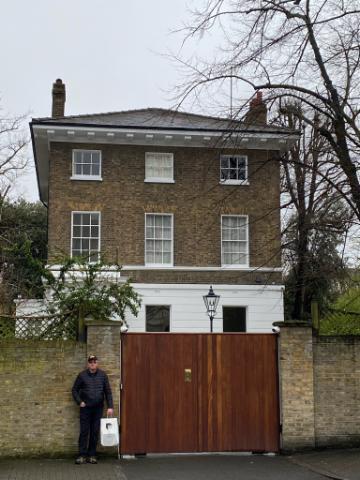 So what were the events that led to this quickly released second single? Apparently, it was the result of an unexpected knock on Paul McCartney's door! On April 14th, 1969, John dropped by Paul's home in St. John's Wood with a new song that he wanted his long-time collaborater to help him complete. “John was in an impatient mood so I was happy to help,” Paul stated in his book “Many Years From Now.” Co-author Barry Miles adds: “They quickly finished it off and went straight round to Abbey Road to record it...John wanted 'The Ballad Of John And Yoko” out fast, like a piece of musical journalism.” So what were the events that led to this quickly released second single? Apparently, it was the result of an unexpected knock on Paul McCartney's door! On April 14th, 1969, John dropped by Paul's home in St. John's Wood with a new song that he wanted his long-time collaborater to help him complete. “John was in an impatient mood so I was happy to help,” Paul stated in his book “Many Years From Now.” Co-author Barry Miles adds: “They quickly finished it off and went straight round to Abbey Road to record it...John wanted 'The Ballad Of John And Yoko” out fast, like a piece of musical journalism.”
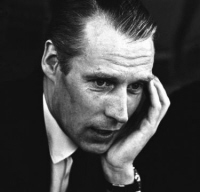 And so, with George out of the country and Ringo busy filming the movie “The Magic Christian,” John and Paul summoned producer George Martin and a couple engineers to record the song that day so as to release it as soon as possible, as per John's insistence. And so, with George out of the country and Ringo busy filming the movie “The Magic Christian,” John and Paul summoned producer George Martin and a couple engineers to record the song that day so as to release it as soon as possible, as per John's insistence.
Songwriting History
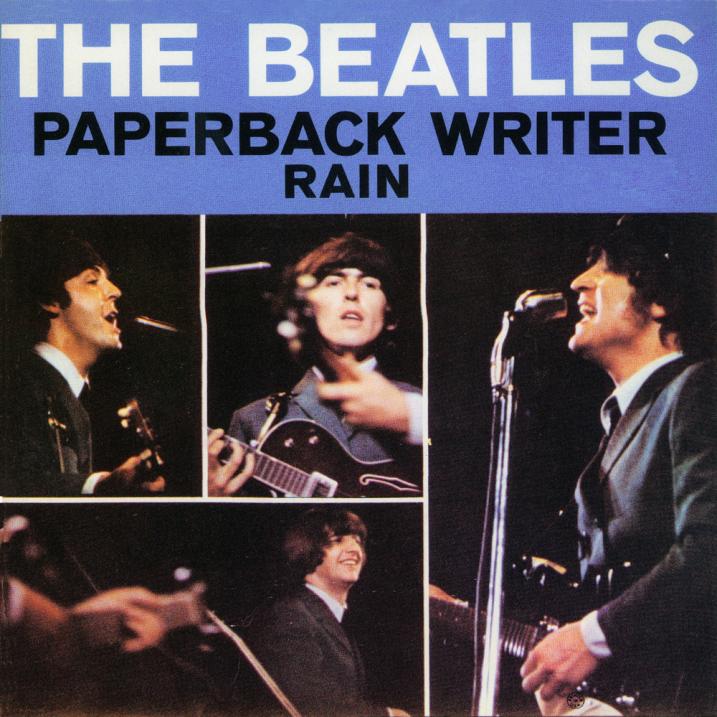 “The follow up to 'Get Back' is 'Ballad Of John And Yoko,'” Lennon explained in 1969. “It's something I wrote, and it's like an old-time ballad. It's just the story of us getting married, going to Paris, going to Amersterdam, all that. It's 'Johnny B. Paperback Writer'”! With tounge-in-cheek, John here describes it as a nod to narrative rock'n'roll songs, such as Chuck Berry's “Johnny B. Goode” and The Beatles' own “Paperback Writer.” “The follow up to 'Get Back' is 'Ballad Of John And Yoko,'” Lennon explained in 1969. “It's something I wrote, and it's like an old-time ballad. It's just the story of us getting married, going to Paris, going to Amersterdam, all that. It's 'Johnny B. Paperback Writer'”! With tounge-in-cheek, John here describes it as a nod to narrative rock'n'roll songs, such as Chuck Berry's “Johnny B. Goode” and The Beatles' own “Paperback Writer.”
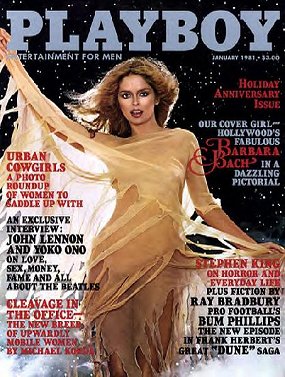 “I wrote it in Paris on our honeymoon,” John told Playboy in 1980. “We had it before we were married. It's a piece of journalism, a folk song. It's like a traditional folk ballad.” John and Yoko were married on March 20th, 1969 and, since the song is describing events pertaining to and following the wedding, the above comment about the composition being written “before we were married” couldn't be true, although the plan to write a song about this chapter in their lives could already have been in place. “I wrote it in Paris on our honeymoon,” John told Playboy in 1980. “We had it before we were married. It's a piece of journalism, a folk song. It's like a traditional folk ballad.” John and Yoko were married on March 20th, 1969 and, since the song is describing events pertaining to and following the wedding, the above comment about the composition being written “before we were married” couldn't be true, although the plan to write a song about this chapter in their lives could already have been in place.
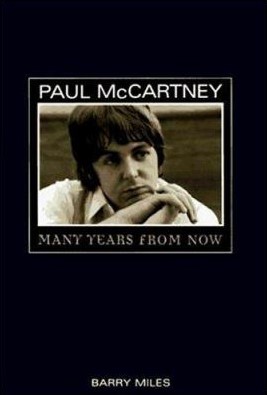 In any event, one can ascertain the time of writing “The Ballad Of John And Yoko” as being between March and April 14th, 1969, when John met Paul at his house to “help him complete” it, as Barry Miles explained above. "John brought (the song) around to Cavendish Avenue for me to help finish the last verse he was having a bit of trouble with," Paul recounts in "Many Years From Now." "He knew he could always leave a couple of sentences out, come and see me and we knew we would always finish them. It was a guaranteed solution." Paul transcribed the lyrics into his 1969 notebook of songs on this day, which can be seen in the “Track By Track” section of the book that accompanies the “Super Deluxe” 50th Anniversary of “Abbey Road.” Interestingly, this page reveals that the song was titled “They're Going To Crucify Me” at that point. In any event, one can ascertain the time of writing “The Ballad Of John And Yoko” as being between March and April 14th, 1969, when John met Paul at his house to “help him complete” it, as Barry Miles explained above. "John brought (the song) around to Cavendish Avenue for me to help finish the last verse he was having a bit of trouble with," Paul recounts in "Many Years From Now." "He knew he could always leave a couple of sentences out, come and see me and we knew we would always finish them. It was a guaranteed solution." Paul transcribed the lyrics into his 1969 notebook of songs on this day, which can be seen in the “Track By Track” section of the book that accompanies the “Super Deluxe” 50th Anniversary of “Abbey Road.” Interestingly, this page reveals that the song was titled “They're Going To Crucify Me” at that point.
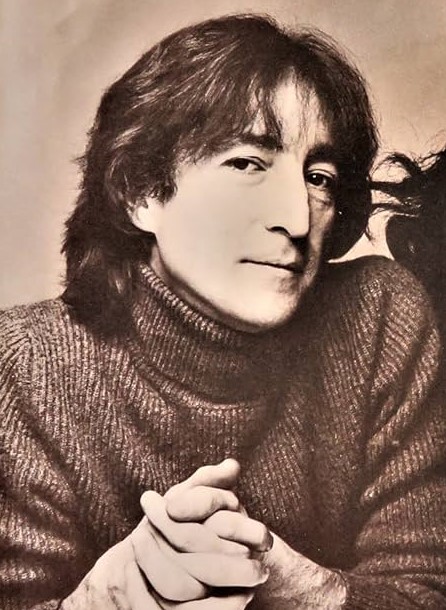 As the lyric unfolds, the first verse was described in detail by John in 1980: “We wanted to get married on a cross-channel ferry. That was the romantic part, when we went to Southampton and then we couldn't get on because she wasn't English and she couldn't get the day visa to go across. And they said, 'Anyway, you can't get married. The Captain's not allowed to do it any more.'” As the lyric unfolds, the first verse was described in detail by John in 1980: “We wanted to get married on a cross-channel ferry. That was the romantic part, when we went to Southampton and then we couldn't get on because she wasn't English and she couldn't get the day visa to go across. And they said, 'Anyway, you can't get married. The Captain's not allowed to do it any more.'”
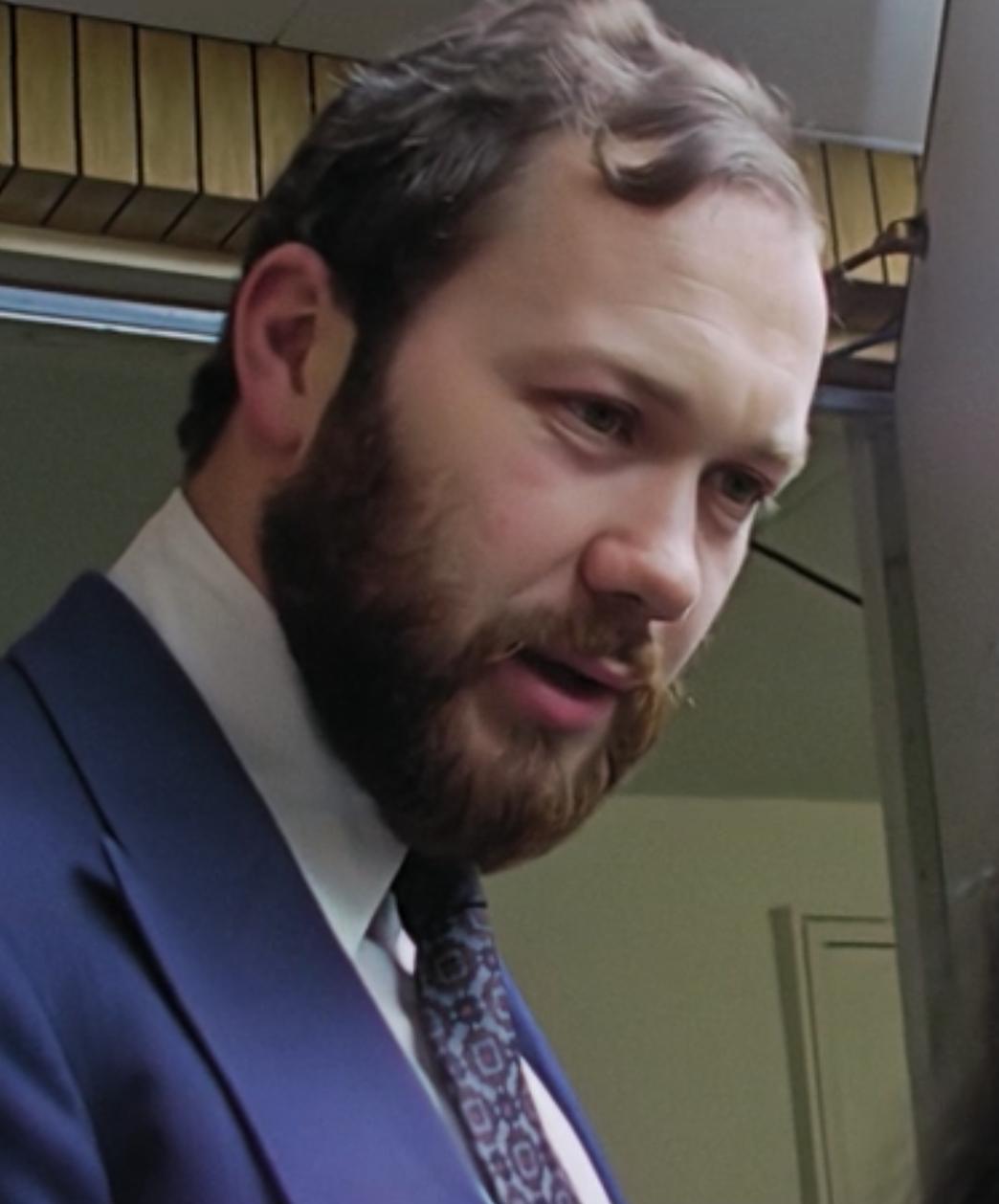 As the second verse relates, the couple then flew to Paris, John chartering an executive jet with the intention of getting married in France. While there, waiting to hear back from his office about whether a quiet wedding ceremony could be arranged in this country, they spent some time “honeymooning” (although not yet married) “down by the Seine,” which is a river that flows through Paris into the English Channel. “So we were in Paris,” John continues, “and we were calling Peter Brown, and said, 'We want to get married. Where can we go?' And he called back and said, 'Gibraltar's the only place.' So – 'OK, let's go!' And we went there and it was beautiful. It's the Pillar of Hercules, and also symbolically they called it the End Of The World at one period...it was like the Gateway To The World. So we liked it in the symbolic sense, and the rock foundation of our relationship.” As the second verse relates, the couple then flew to Paris, John chartering an executive jet with the intention of getting married in France. While there, waiting to hear back from his office about whether a quiet wedding ceremony could be arranged in this country, they spent some time “honeymooning” (although not yet married) “down by the Seine,” which is a river that flows through Paris into the English Channel. “So we were in Paris,” John continues, “and we were calling Peter Brown, and said, 'We want to get married. Where can we go?' And he called back and said, 'Gibraltar's the only place.' So – 'OK, let's go!' And we went there and it was beautiful. It's the Pillar of Hercules, and also symbolically they called it the End Of The World at one period...it was like the Gateway To The World. So we liked it in the symbolic sense, and the rock foundation of our relationship.”
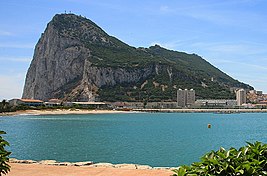 Interestingly, Paul's originally transcribed lyrics read “You can marry in Gibraltar in Spain,” instead of “near Spain” as John sang in the finished recording. With the ownership of Gibraltar being a matter of dispute for a long time, had the lyric remained “in Spain,” this undoubtedly would have kept the song from being banned from the Spanish airwaves. Interestingly, Paul's originally transcribed lyrics read “You can marry in Gibraltar in Spain,” instead of “near Spain” as John sang in the finished recording. With the ownership of Gibraltar being a matter of dispute for a long time, had the lyric remained “in Spain,” this undoubtedly would have kept the song from being banned from the Spanish airwaves.
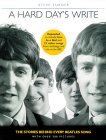 But, why was Gibraltar the only place that they could get married? “I think John and Yoko were trying to keep the wedding fairly quiet; that's why he went to Gibraltar,” stated Ringo in the book “Beatles Anthology.” However, there was more to it. According to Steve Turner, in his book “A Hard Day's Write,” “Peter Brown discovered that (a marriange in France) couldn't be organized at short notice but that they could marry in Gibraltar because it was a British protectorate and John was a British citizen.” It is also to be noted that John had been traveling abroad without his passport. But, why was Gibraltar the only place that they could get married? “I think John and Yoko were trying to keep the wedding fairly quiet; that's why he went to Gibraltar,” stated Ringo in the book “Beatles Anthology.” However, there was more to it. According to Steve Turner, in his book “A Hard Day's Write,” “Peter Brown discovered that (a marriange in France) couldn't be organized at short notice but that they could marry in Gibraltar because it was a British protectorate and John was a British citizen.” It is also to be noted that John had been traveling abroad without his passport.
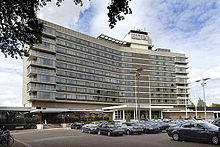 A private plane was chartered to dispatch the couple to Gibraltar on March 20th, 1969, for the quick ten-minute ceremony. Having been on the ground for less than an hour, they immediately flew to Amsterdam, The Netherlands, to spend their actual honeymoon, having booked a week in the Presidential Suite at the Hilton. These events are briefed over in the third verse of the song, one discrepancy being that they hadn't “drove from Paris to the Amsterdam Hilton.” Instead, they flew from Paris to Gibraltar to marry, and then flew to Amsterdam afterward. A private plane was chartered to dispatch the couple to Gibraltar on March 20th, 1969, for the quick ten-minute ceremony. Having been on the ground for less than an hour, they immediately flew to Amsterdam, The Netherlands, to spend their actual honeymoon, having booked a week in the Presidential Suite at the Hilton. These events are briefed over in the third verse of the song, one discrepancy being that they hadn't “drove from Paris to the Amsterdam Hilton.” Instead, they flew from Paris to Gibraltar to marry, and then flew to Amsterdam afterward.
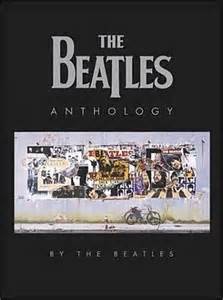 They spent their actual honeymoon, as the third verse relates, “talking in our beds for a week.” “Yoko and I decided that we knew whatever we did was going to be in the papers,” Lennon explained in 1975. “We decided to utilize the space we would occupy anyway, by getting married, with a commercial for peace.” As printed in “Beatles Anthology,” John continues: “Now the bed-in was just to catch the attention of the press...We sent out a card: 'Come to John and Yoko's honeymoon: a bed-in, Amsterdam Hotel.' You should have seen the faces on the reporters and the cameramen fighting their way through the door!...The press seemed to think we were going to make love in public because we made an album with us naked – so they seem to think anything goes...We talked to the press...We said, 'let's get some peace, peace, peace, peace on the headlines, just for a change!” They spent their actual honeymoon, as the third verse relates, “talking in our beds for a week.” “Yoko and I decided that we knew whatever we did was going to be in the papers,” Lennon explained in 1975. “We decided to utilize the space we would occupy anyway, by getting married, with a commercial for peace.” As printed in “Beatles Anthology,” John continues: “Now the bed-in was just to catch the attention of the press...We sent out a card: 'Come to John and Yoko's honeymoon: a bed-in, Amsterdam Hotel.' You should have seen the faces on the reporters and the cameramen fighting their way through the door!...The press seemed to think we were going to make love in public because we made an album with us naked – so they seem to think anything goes...We talked to the press...We said, 'let's get some peace, peace, peace, peace on the headlines, just for a change!”
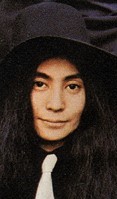 After the song's bridge speaks of the couple's charitible aspriations, as explained by a quote from Yoko about how “when you're dead, you won't take nothing with you but your soul,” the fourth verse details their next stop in Vienna, Austria. They stayed overnight at the Hotel Sacher and sampled a bit of their famous Sacher Torte, which was a rich chocolate cake, before viewing the premiere of a film the couple had produced. After the song's bridge speaks of the couple's charitible aspriations, as explained by a quote from Yoko about how “when you're dead, you won't take nothing with you but your soul,” the fourth verse details their next stop in Vienna, Austria. They stayed overnight at the Hotel Sacher and sampled a bit of their famous Sacher Torte, which was a rich chocolate cake, before viewing the premiere of a film the couple had produced.
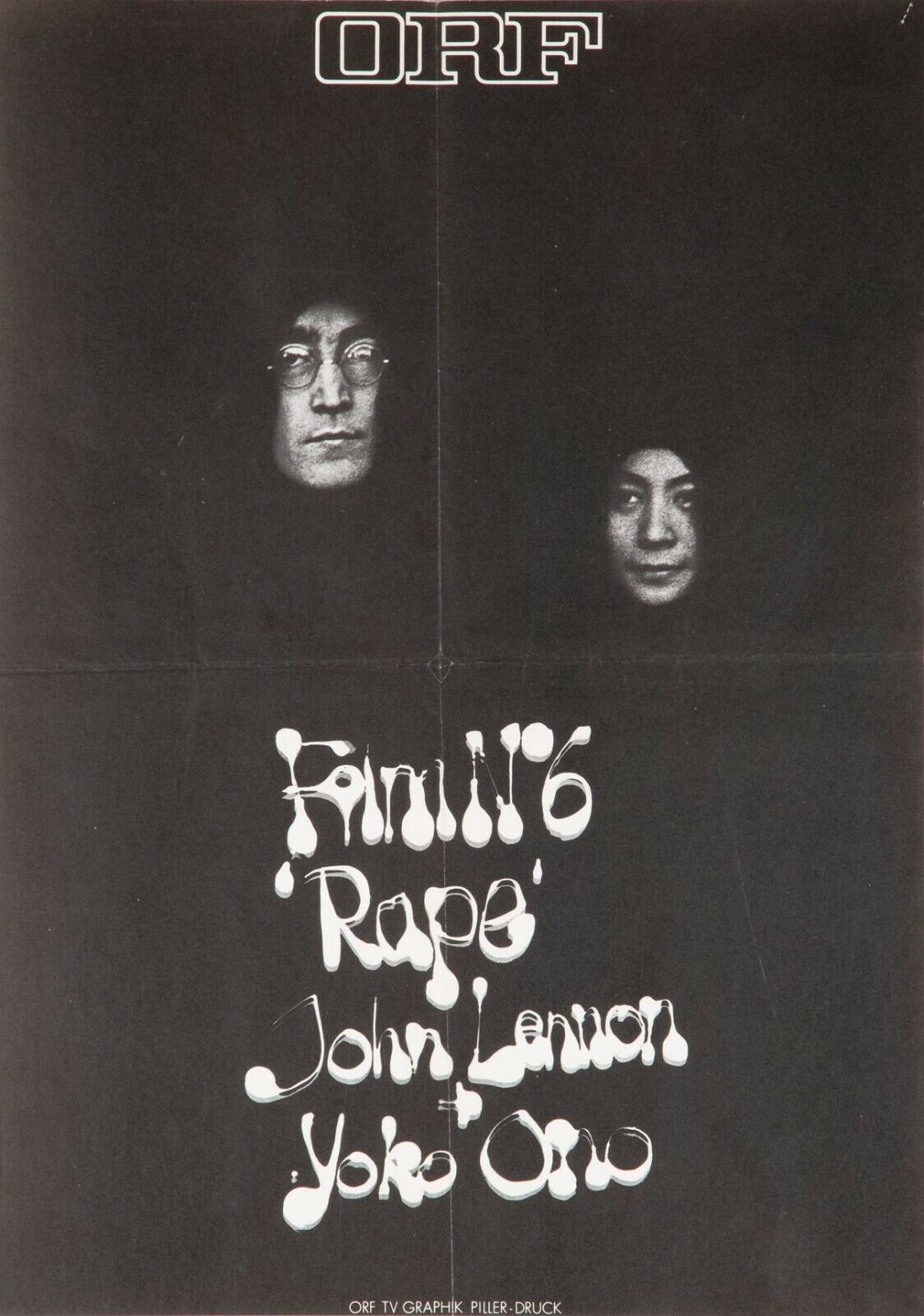 “We were asked to make a film for Austrian TV,” John explained in 1971, “which we did, called 'Rape'...So when we went to Austria to show it, we did a press conference in a bag. And it was great, because all the press came in and they never saw us – we were both in a bag, and they interviewed the bag. They were saying, 'Is it really you?' and 'What are you wearing?' and 'Will you sing a song?' They were saying, 'Why us?' 'What is this?' and I said, 'It's total communication.'...If everyone went in a bag for a job there'd be no prejudice; you'd have to judge people on their quality within. We call it total communication. It was a great press conference, and they all had a very serious conversation with a bag. The next day the headlines in Austria were – they'd show a bag with all the press men just talking to it.” Of course, when news of this hit the world press, the opinion was that Yoko had dramatically changed John, as the fourth verse explained, “She's gone to his head!” “We were asked to make a film for Austrian TV,” John explained in 1971, “which we did, called 'Rape'...So when we went to Austria to show it, we did a press conference in a bag. And it was great, because all the press came in and they never saw us – we were both in a bag, and they interviewed the bag. They were saying, 'Is it really you?' and 'What are you wearing?' and 'Will you sing a song?' They were saying, 'Why us?' 'What is this?' and I said, 'It's total communication.'...If everyone went in a bag for a job there'd be no prejudice; you'd have to judge people on their quality within. We call it total communication. It was a great press conference, and they all had a very serious conversation with a bag. The next day the headlines in Austria were – they'd show a bag with all the press men just talking to it.” Of course, when news of this hit the world press, the opinion was that Yoko had dramatically changed John, as the fourth verse explained, “She's gone to his head!”
Beginning on April 1st, 1969, when they arrived back in London for a press conference, the fifth verse of the song plays out. With all of the unorthodox activities that ensued in regards to their marriage, bed-in, and display of “bagism,” they expected the usual hostile treatment from the press upon their return. Instead, they were warmly welcomed with well-wishes, expressing that it was “good to have the both of you back.”
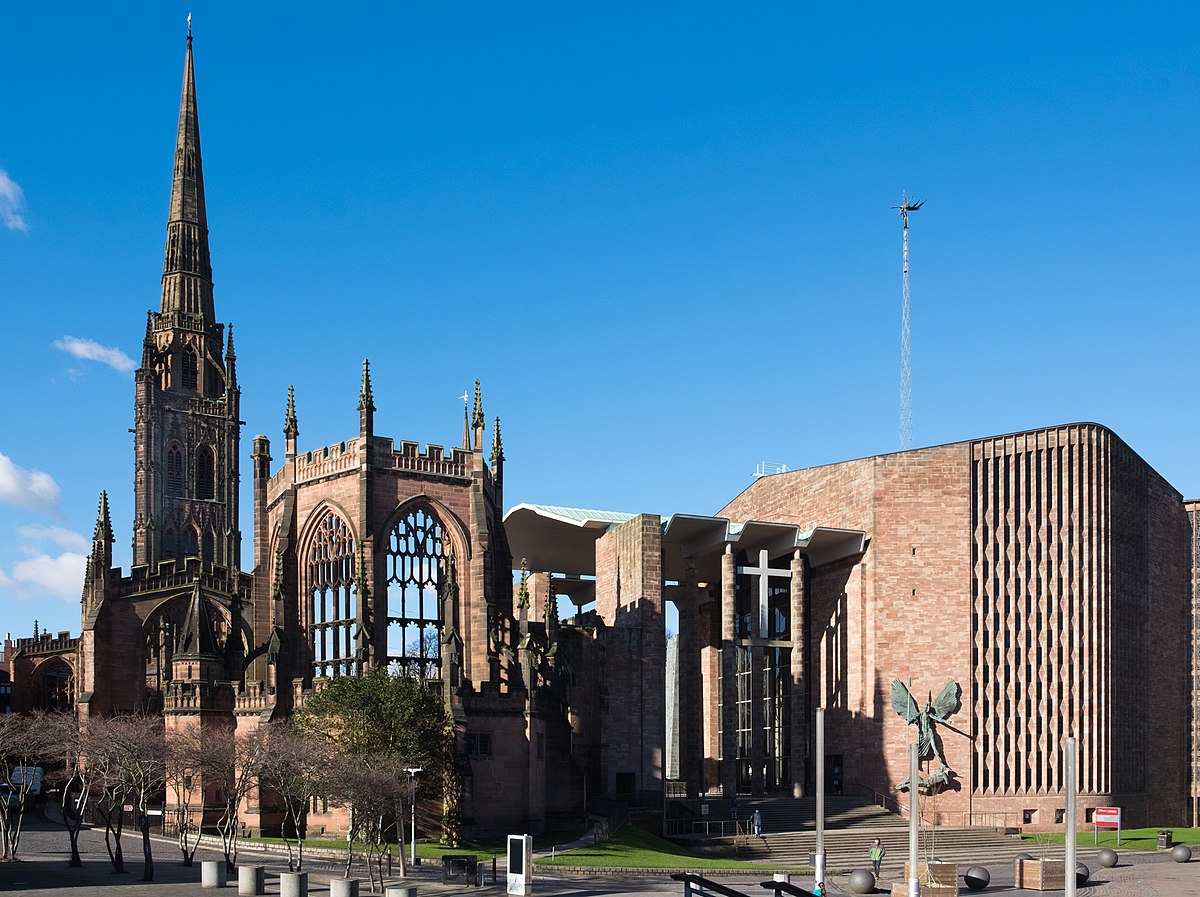 As for the lyric “fifty acorns tied in a sack,” this referenced John and Yoko sending heads of government and crowned rulers a small package with a note that read, “We are sending you two living sculptures – which are acorns – in the hope that you will plant them in your garden and grow two oak-trees for world peace.” The couple had done this themselves back in June of 1968, planting them in the ruins of Coventry Cathedral, a medieval building destroyed during an aerial bombing raid during World War II. As for the lyric “fifty acorns tied in a sack,” this referenced John and Yoko sending heads of government and crowned rulers a small package with a note that read, “We are sending you two living sculptures – which are acorns – in the hope that you will plant them in your garden and grow two oak-trees for world peace.” The couple had done this themselves back in June of 1968, planting them in the ruins of Coventry Cathedral, a medieval building destroyed during an aerial bombing raid during World War II.
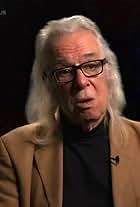 The ill-treatment that John and Yoko had been receiving because of their highly publicized activities, as well as their struggle for a location to be married, were equated with the struggles of Jesus in the song's chorus, which made for the most controversy in regards to the recording's success. Lennon knew in advance that this would send some shock-waves, as witnessed by his note to Tony Bramwell in Apple's promotion department prior to the record's release: “No pre-publicity...especially the Christ bit – so don't play it round too much or you'll frighten people – get it pressed first.” The ill-treatment that John and Yoko had been receiving because of their highly publicized activities, as well as their struggle for a location to be married, were equated with the struggles of Jesus in the song's chorus, which made for the most controversy in regards to the recording's success. Lennon knew in advance that this would send some shock-waves, as witnessed by his note to Tony Bramwell in Apple's promotion department prior to the record's release: “No pre-publicity...especially the Christ bit – so don't play it round too much or you'll frighten people – get it pressed first.”
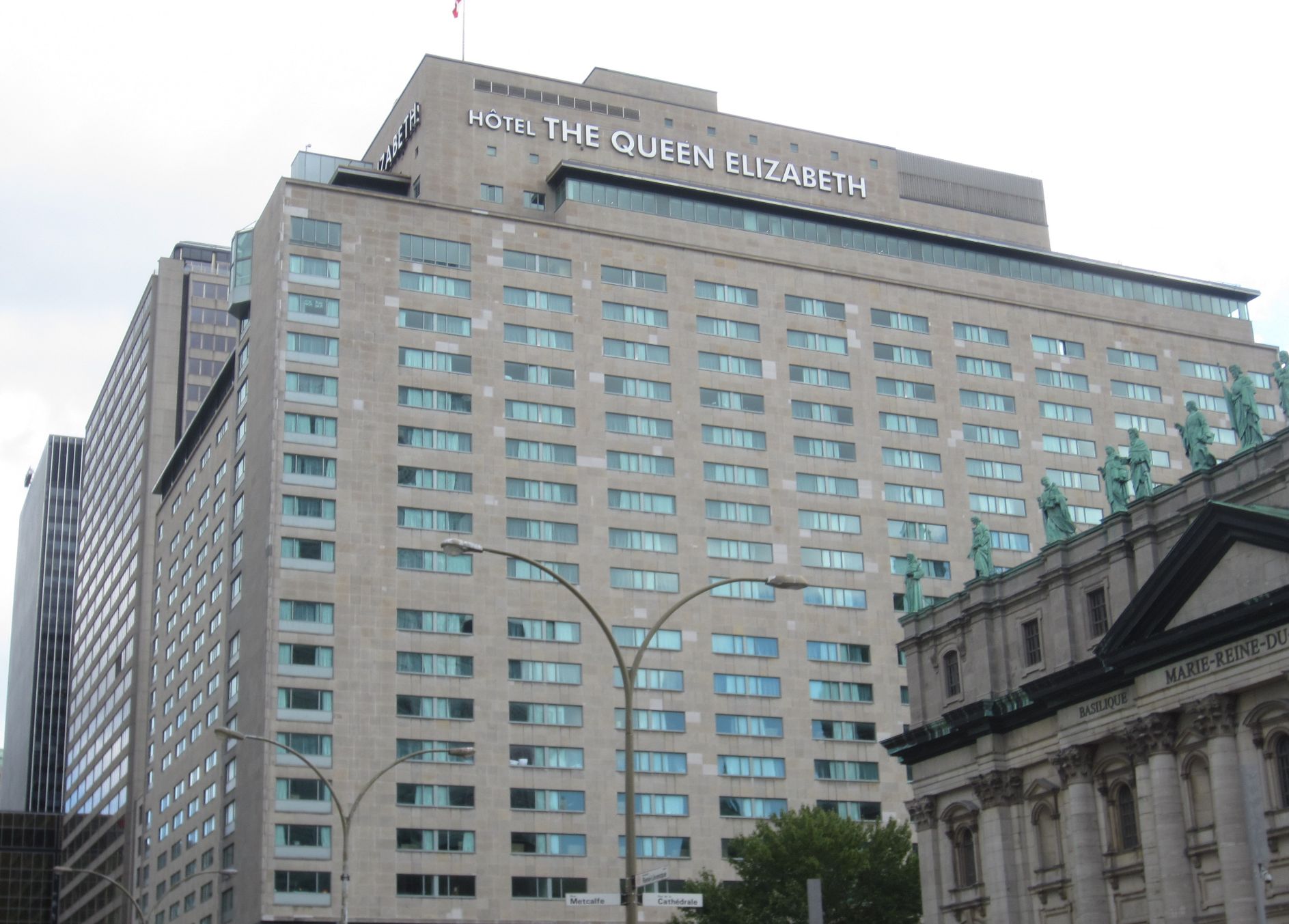 During the week that the song was released in the UK, John and Yoko were holding their second 'bed-in for peace' in Montreal, Canada, news traveling quickly about the controversial nature of the lyrics of the single that was scheduled to come out days later in the US. “It's like a prayer,” John tried to rationalize to DJ Bob Lewis during the 'bed-in.' “You know, 'Jesus, you alone should know it ain't easy.' And it has the street language connotation too. But even when it's used irreverently, it's in effect a prayer too. It's a gospel song. I'm a big Christ fan. The song is a prayer.” During the week that the song was released in the UK, John and Yoko were holding their second 'bed-in for peace' in Montreal, Canada, news traveling quickly about the controversial nature of the lyrics of the single that was scheduled to come out days later in the US. “It's like a prayer,” John tried to rationalize to DJ Bob Lewis during the 'bed-in.' “You know, 'Jesus, you alone should know it ain't easy.' And it has the street language connotation too. But even when it's used irreverently, it's in effect a prayer too. It's a gospel song. I'm a big Christ fan. The song is a prayer.”
 American cartoonist and celebrity Al Capp, who was sent to interview the couple during the Montreal 'bed-in,' wasn't buying John's explanation: Al Capp: “In the lyric, you said they're going to crucify you.” John: “Yeah, you can take it literally.” Al Capp: “So, how did you mean it?” John: “It means everything you want it to mean.” Al Capp: “What did you want it to mean?” John: “They're going to crucify me and you and everyone else.” Al Capp: “I'm upset that they're going to crucify me. Who's going to make the time to crucify you?” John: “Everyone!” Al Capp: “But you said, 'They're gonna crucify me.'” John: “Oh, if you're going to take everything litereally.” American cartoonist and celebrity Al Capp, who was sent to interview the couple during the Montreal 'bed-in,' wasn't buying John's explanation: Al Capp: “In the lyric, you said they're going to crucify you.” John: “Yeah, you can take it literally.” Al Capp: “So, how did you mean it?” John: “It means everything you want it to mean.” Al Capp: “What did you want it to mean?” John: “They're going to crucify me and you and everyone else.” Al Capp: “I'm upset that they're going to crucify me. Who's going to make the time to crucify you?” John: “Everyone!” Al Capp: “But you said, 'They're gonna crucify me.'” John: “Oh, if you're going to take everything litereally.”
Recording History
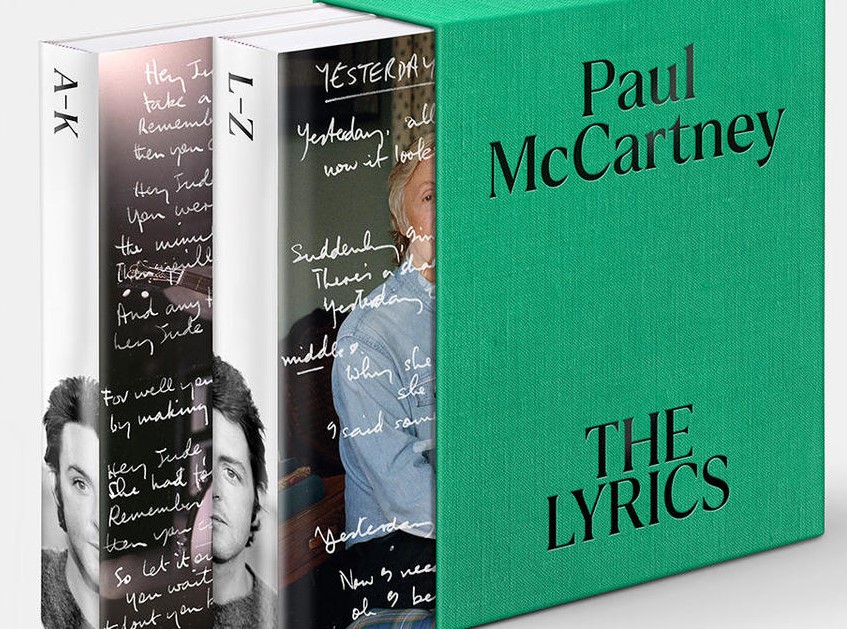 “John and Yoko came round to see me,” Paul recalls about the events of April 14th, 1969, “and John said, 'I've got this song about me and Yoko, and I'm hot to record it. I'd like to ring up the studio, get some time and we could do it right now. You could play bass and you could play drums,' because he knew I could just about do them." In his 2021 book "The Lyrics," Paul elaborates: "He enlisted me for that because he knew it was a great way to make a record. 'We'll go round to Abbey Road Studios. Who lives near there? Paul. Who's going to drum on this record? Paul. Who can play bass? Paul. And who'll do it if I ask him nicely? Paul.' He wasn't at all sheepish about asking. He probably said something like, 'Oh, I've got this song I want to record. Would you come round?' And I probably said, 'Yeah, why not?'...In the end, I think playing on that session with him and Yoko contributed to our having quite a few friendly meetings and conversations later." “John and Yoko came round to see me,” Paul recalls about the events of April 14th, 1969, “and John said, 'I've got this song about me and Yoko, and I'm hot to record it. I'd like to ring up the studio, get some time and we could do it right now. You could play bass and you could play drums,' because he knew I could just about do them." In his 2021 book "The Lyrics," Paul elaborates: "He enlisted me for that because he knew it was a great way to make a record. 'We'll go round to Abbey Road Studios. Who lives near there? Paul. Who's going to drum on this record? Paul. Who can play bass? Paul. And who'll do it if I ask him nicely? Paul.' He wasn't at all sheepish about asking. He probably said something like, 'Oh, I've got this song I want to record. Would you come round?' And I probably said, 'Yeah, why not?'...In the end, I think playing on that session with him and Yoko contributed to our having quite a few friendly meetings and conversations later."
 Once the two of them finished off the writing of the song at Paul's house, as described above, they drove over to EMI Studios, where they had just hastilly booked 2:30 to 10 pm, to record this newly completed composition. George Martin happened to be available, as were engineers John Kurlander and Geoff Emerick, the latter having not worked with The Beatles since his quitting his relationship with them in disgust during the sessions for the “White Album.” Once the two of them finished off the writing of the song at Paul's house, as described above, they drove over to EMI Studios, where they had just hastilly booked 2:30 to 10 pm, to record this newly completed composition. George Martin happened to be available, as were engineers John Kurlander and Geoff Emerick, the latter having not worked with The Beatles since his quitting his relationship with them in disgust during the sessions for the “White Album.”
 “I received a phone call from Peter Brown,” Geoff Emerick relates in his book “Here There And Everywhere,” “telling me in breathless tones that John had just written a new song and would be coming into Abbey Road...Would I be willing to do the session? I asked Peter rather tentatively if John was 'OK' these days. He understood exactly what I was getting at; as the Beatles' designated minder, he had seen plenty of Lennon at his worst. 'Yes, he's fine,' Peter assured me. 'He's in really good spirits at the moment, and he's really up about the new song. And he specifically asked me if I could get you to engineer it.' How could I possibly say no to that?” “I received a phone call from Peter Brown,” Geoff Emerick relates in his book “Here There And Everywhere,” “telling me in breathless tones that John had just written a new song and would be coming into Abbey Road...Would I be willing to do the session? I asked Peter rather tentatively if John was 'OK' these days. He understood exactly what I was getting at; as the Beatles' designated minder, he had seen plenty of Lennon at his worst. 'Yes, he's fine,' Peter assured me. 'He's in really good spirits at the moment, and he's really up about the new song. And he specifically asked me if I could get you to engineer it.' How could I possibly say no to that?”
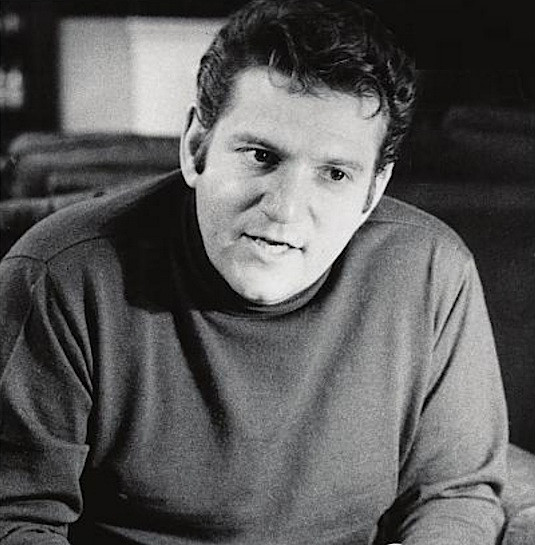 Tensions were quite high in recent months between John and Paul due to their trying to decide who they wanted to hire to manage the affairs of the band; John, George and Ringo wanted to employ Allen Klein while Paul favored the law firm of Eastman and Eastman, which was run by his new in-laws. However, John's enthusiasm for this last-minute project rubbed off on Paul, the two of them now determined to tackle this undertaking on a day they had nothing better to do anyway. They may as well make it a productive day off! Tensions were quite high in recent months between John and Paul due to their trying to decide who they wanted to hire to manage the affairs of the band; John, George and Ringo wanted to employ Allen Klein while Paul favored the law firm of Eastman and Eastman, which was run by his new in-laws. However, John's enthusiasm for this last-minute project rubbed off on Paul, the two of them now determined to tackle this undertaking on a day they had nothing better to do anyway. They may as well make it a productive day off!
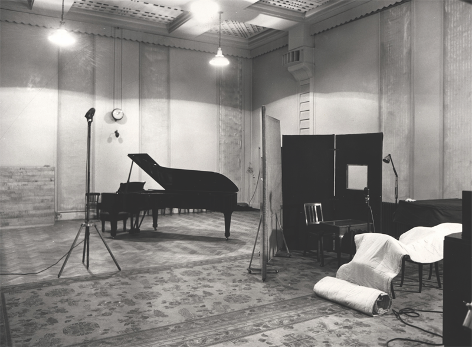 “The session was booked to start in mid-afternoon,” Geoff Emerick continues about the day's session at EMI Studio Three, “and to my amazement, a chipper John actually rolled up spot on time, with Paul following just a few minutes later. It was officially supposed to be a Beatles session, but they were the only two band members to turn up that day, Paul taking the drummer's chair, playing Ringo's kit with confidence and ease. The two Beatles seemed remarkably relaxed, despite the horror stories I had heard about the rows and bad feelings engendered by the 'Let It Be' sessions. On this one day, they reverted to being two old school chums, all the nastiness of recent months swept under the rug and replaced by the sheer joy of making music together.” “The session was booked to start in mid-afternoon,” Geoff Emerick continues about the day's session at EMI Studio Three, “and to my amazement, a chipper John actually rolled up spot on time, with Paul following just a few minutes later. It was officially supposed to be a Beatles session, but they were the only two band members to turn up that day, Paul taking the drummer's chair, playing Ringo's kit with confidence and ease. The two Beatles seemed remarkably relaxed, despite the horror stories I had heard about the rows and bad feelings engendered by the 'Let It Be' sessions. On this one day, they reverted to being two old school chums, all the nastiness of recent months swept under the rug and replaced by the sheer joy of making music together.”
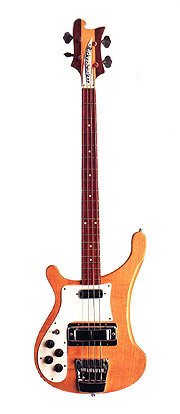 “It was a great session, one of those magic times when everything went right and nothing went wrong...A new eight-track machine had been installed in the control room just recently, and we put it to good use that day. The eight-track recorder allowed for lots of overdubs, so John played all the guitars – lead and rhythm – while Paul handled bass, piano, percussion, and drums; they made for a great two-man band. That was one of the first times I put microphones both on top of and under the snare drum, which imparted a larger-than-life crack to the sound, the perfect complement to John's aggressive vocal.” “It was a great session, one of those magic times when everything went right and nothing went wrong...A new eight-track machine had been installed in the control room just recently, and we put it to good use that day. The eight-track recorder allowed for lots of overdubs, so John played all the guitars – lead and rhythm – while Paul handled bass, piano, percussion, and drums; they made for a great two-man band. That was one of the first times I put microphones both on top of and under the snare drum, which imparted a larger-than-life crack to the sound, the perfect complement to John's aggressive vocal.”
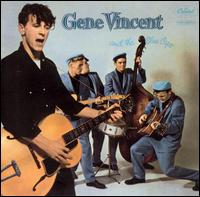 The “sequence of events – for reference,” as John Kurlander called it, was preserved in detail by the engineer on the recording sheet. The rhythm track consisted of John on acoustic guitar (track two), Paul on drums (track three) and John's lead vocal (track four). John's vocal track was treated with a bit of slap-back echo reminiscent of Gene Vincent's “Be Bop A Lula,” an effect that John would use quite regularly during his solo career. The “sequence of events – for reference,” as John Kurlander called it, was preserved in detail by the engineer on the recording sheet. The rhythm track consisted of John on acoustic guitar (track two), Paul on drums (track three) and John's lead vocal (track four). John's vocal track was treated with a bit of slap-back echo reminiscent of Gene Vincent's “Be Bop A Lula,” an effect that John would use quite regularly during his solo career.
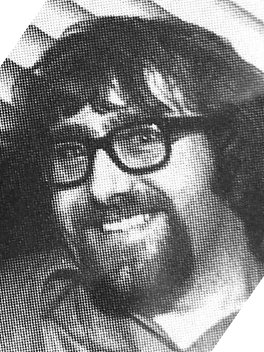 They recorded eleven takes of the rhythm track, only takes one, seven, ten and eleven making it to the end of the song, the others breaking down early. Most of the aborted takes broke down at the same spot, Paul mistakenly playing an extra snare drum fill before the vocal line “made a lightning trip to Vienna.” 'Take two' ended early because of John breaking a guitar string, a usual event for him in the studio through the years. After this occurred, John called out to assistant Mal Evans, “Mal!...Un string avec caput, Mal,” signaling him to appropriate a replacement in due haste. 'Take three' ended early because of Paul speeding up on the drums, the tempo-perfect Ringo not being present as usual. “It got a bit faster, Ringo,” John instructs, prompting Paul to chuckle and reply, “OK, George!” These fun-natured exchanges, representative of how much they were enjoying this session, were captured on various 50th Anniversary editions of “Abbey Road.” They recorded eleven takes of the rhythm track, only takes one, seven, ten and eleven making it to the end of the song, the others breaking down early. Most of the aborted takes broke down at the same spot, Paul mistakenly playing an extra snare drum fill before the vocal line “made a lightning trip to Vienna.” 'Take two' ended early because of John breaking a guitar string, a usual event for him in the studio through the years. After this occurred, John called out to assistant Mal Evans, “Mal!...Un string avec caput, Mal,” signaling him to appropriate a replacement in due haste. 'Take three' ended early because of Paul speeding up on the drums, the tempo-perfect Ringo not being present as usual. “It got a bit faster, Ringo,” John instructs, prompting Paul to chuckle and reply, “OK, George!” These fun-natured exchanges, representative of how much they were enjoying this session, were captured on various 50th Anniversary editions of “Abbey Road.”
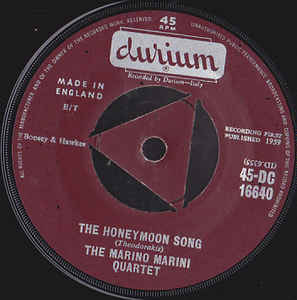 These editions also contained the entire 'take seven,' which reveals that John originally began the song alone on acoustic guitar before Paul joined in just prior to the vocals of the first verse. We also witness John vocalizing the concluding guitar figure that he would overdub later, reminiscent of "The Honeymoon Song," a selection by Marino Marini and his Quartet from 1959 that The Beatles used to perform regularly in their early years, their own rendition included on the 1994 release "Live At The BBC." It only makes sense that John would insist on this reference since the subject matter of "The Ballad Of John And Yoko" included their own honeymoon. Since five attempts of the rhythm track broke down prior to 'take seven,' this complete rendition ends with a jubilant cry from Lennon: “Yeeeeah, We'll have it, we'll have it!”, followed by Paul privately celebrating the occasion with some additional drum work. John then states, “it was worth it for that, 'cause you came out before it; that's alright.” Paul then replies, “Ah, I think we'll listen to it.” These editions also contained the entire 'take seven,' which reveals that John originally began the song alone on acoustic guitar before Paul joined in just prior to the vocals of the first verse. We also witness John vocalizing the concluding guitar figure that he would overdub later, reminiscent of "The Honeymoon Song," a selection by Marino Marini and his Quartet from 1959 that The Beatles used to perform regularly in their early years, their own rendition included on the 1994 release "Live At The BBC." It only makes sense that John would insist on this reference since the subject matter of "The Ballad Of John And Yoko" included their own honeymoon. Since five attempts of the rhythm track broke down prior to 'take seven,' this complete rendition ends with a jubilant cry from Lennon: “Yeeeeah, We'll have it, we'll have it!”, followed by Paul privately celebrating the occasion with some additional drum work. John then states, “it was worth it for that, 'cause you came out before it; that's alright.” Paul then replies, “Ah, I think we'll listen to it.”
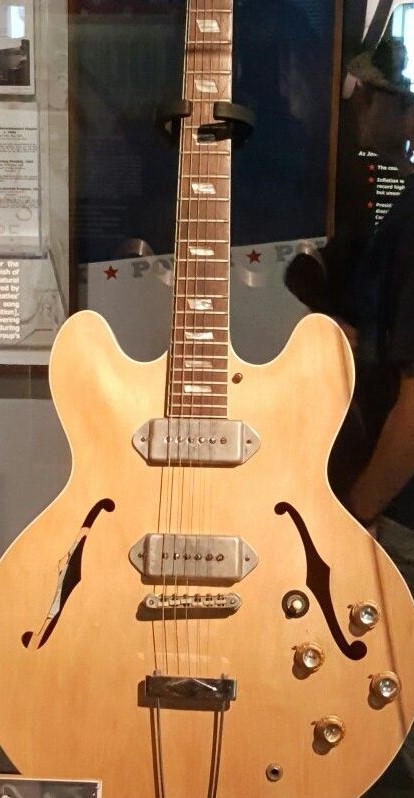 After takes eight and nine break down, "take 10" made it through to the end of the song. Even though John thought it was acceptable, Paul voiced the opinion, “I thought the others were better.” John then asked the engineering team, “What'd you think in there?” before they did one further take in an attempt to raise the key to G major. After realizing it sounded better in E major, they decided to return to "take 10" for overdubbing purposes. Onto "take 10," Paul overdubbed bass (track one), John added his Epiphone Casino electric guitar (track five), John doubled his electric guitar while Paul added piano (track six), Paul provided backing vocals (track seven) and John thumped the back of his guitar while Paul played marracas (track eight). After takes eight and nine break down, "take 10" made it through to the end of the song. Even though John thought it was acceptable, Paul voiced the opinion, “I thought the others were better.” John then asked the engineering team, “What'd you think in there?” before they did one further take in an attempt to raise the key to G major. After realizing it sounded better in E major, they decided to return to "take 10" for overdubbing purposes. Onto "take 10," Paul overdubbed bass (track one), John added his Epiphone Casino electric guitar (track five), John doubled his electric guitar while Paul added piano (track six), Paul provided backing vocals (track seven) and John thumped the back of his guitar while Paul played marracas (track eight).
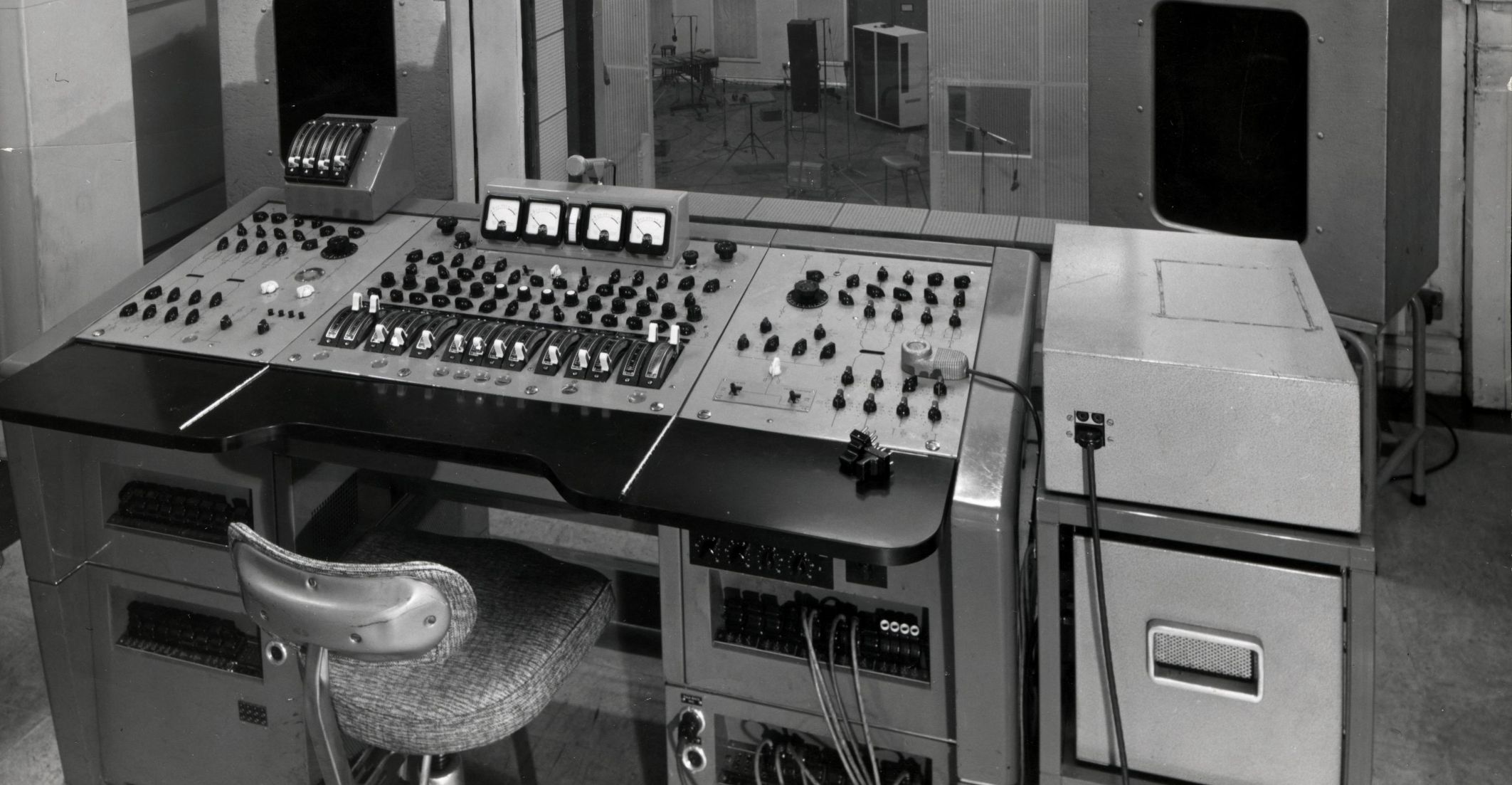 “The whole record was completed in just a few hours, from start to finish, including the mix – just like the good old days,” Geoff Emerick recalls. John and Paul entered the control room of EMI Studio Three just after the overdubs were complete to assist the engineering team in creating the stereo mix of the song, only two hours needed to get the perfect mix. From 9 to 11 pm, they created five mixes, the fifth being deemed best for what became the first ever stereo Beatles single in the UK (“Get Back” was issued as a stereo single in the US). “The luxury of eight tracks allowed us to do a detailed stereo mix and, as icing on the cake, the record ended up being mastered by Malcolm (Davies) at Apple (Studios),” Geoff Emerick continues. No mono mix was deemed necessary, which was also a first for Beatles recordings. “The whole record was completed in just a few hours, from start to finish, including the mix – just like the good old days,” Geoff Emerick recalls. John and Paul entered the control room of EMI Studio Three just after the overdubs were complete to assist the engineering team in creating the stereo mix of the song, only two hours needed to get the perfect mix. From 9 to 11 pm, they created five mixes, the fifth being deemed best for what became the first ever stereo Beatles single in the UK (“Get Back” was issued as a stereo single in the US). “The luxury of eight tracks allowed us to do a detailed stereo mix and, as icing on the cake, the record ended up being mastered by Malcolm (Davies) at Apple (Studios),” Geoff Emerick continues. No mono mix was deemed necessary, which was also a first for Beatles recordings.
 On the tape box that contained these mixes, the phrase “Another winner from 'ERNIE'” was written. As Kevin Howlett explains in the liner notes for the 50th Anniversary release of “Abbey Road,” “This was a familiar phrase in the UK at the time. The Electronic Random Number Indicator Equipment generated a selection of prize-winning Premium Bonds that had been purchased as part of a national savings scheme." "I enjoyed working with John and Yoko on 'The Ballad Of John And Yoko,'" stated George Martin. "It was just the two of them with Paul. When you think about it, in a funny kind of way it was the beginning or their own label, and their own way or recording." On the tape box that contained these mixes, the phrase “Another winner from 'ERNIE'” was written. As Kevin Howlett explains in the liner notes for the 50th Anniversary release of “Abbey Road,” “This was a familiar phrase in the UK at the time. The Electronic Random Number Indicator Equipment generated a selection of prize-winning Premium Bonds that had been purchased as part of a national savings scheme." "I enjoyed working with John and Yoko on 'The Ballad Of John And Yoko,'" stated George Martin. "It was just the two of them with Paul. When you think about it, in a funny kind of way it was the beginning or their own label, and their own way or recording."
 Sometime in 2019, George Martin's son Giles Martin, along with engineer Sam Okell, returned to these master tapes to create a stereo mix of the complete "take seven" of “The Ballad Of John And Yoko.” Because the song was recorded during the months that resulted in the “Abbey Road” album, this outtake was included in various releases in celebration of the LP's 50th Anniversary, complete with interesting banter inbetween early takes as described above. Sometime in 2019, George Martin's son Giles Martin, along with engineer Sam Okell, returned to these master tapes to create a stereo mix of the complete "take seven" of “The Ballad Of John And Yoko.” Because the song was recorded during the months that resulted in the “Abbey Road” album, this outtake was included in various releases in celebration of the LP's 50th Anniversary, complete with interesting banter inbetween early takes as described above.
Song Structure and Style
The structure of the song parses out to 'verse/ chorus/ verse/ chorus/ verse/ chorus/ bridge/ verse/ chorus/ verse chorus' (or abababcabab). A brief introduction and conclusion are also included, while no solo or instrumental section was deemed necessary.
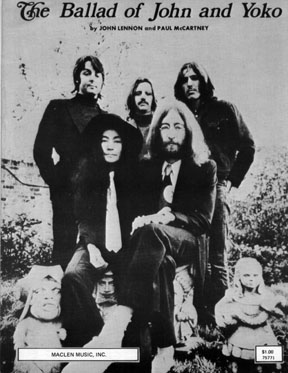 After a simple two-measure introduction, which comprises John on acoustic guitar and Paul on drums and overdubbed bass, the first eight-measure verse begins. John's lead vocals begin on the downbeat of the first measure, while his slight lead guitar riffs and echoed riffs appear in the second and fourth measure, both of these guitar overdubs being panned to opposite channels in the stereo landscape. This moves directly into the first eight-measure chorus with the same instrumentation. John plays four lead guitar riffs, in measures one, three, five and seven respectively, in a descending scale that harmonize with each other, both overdubs still panned to opposite channels. The seventh and eighth measures feature the first appearance of Paul's piano overdub playing simple E major triads while the eighth measure has the final note of John's lower lead guitar riff pulled up the fretboard at the end. After a simple two-measure introduction, which comprises John on acoustic guitar and Paul on drums and overdubbed bass, the first eight-measure verse begins. John's lead vocals begin on the downbeat of the first measure, while his slight lead guitar riffs and echoed riffs appear in the second and fourth measure, both of these guitar overdubs being panned to opposite channels in the stereo landscape. This moves directly into the first eight-measure chorus with the same instrumentation. John plays four lead guitar riffs, in measures one, three, five and seven respectively, in a descending scale that harmonize with each other, both overdubs still panned to opposite channels. The seventh and eighth measures feature the first appearance of Paul's piano overdub playing simple E major triads while the eighth measure has the final note of John's lower lead guitar riff pulled up the fretboard at the end.
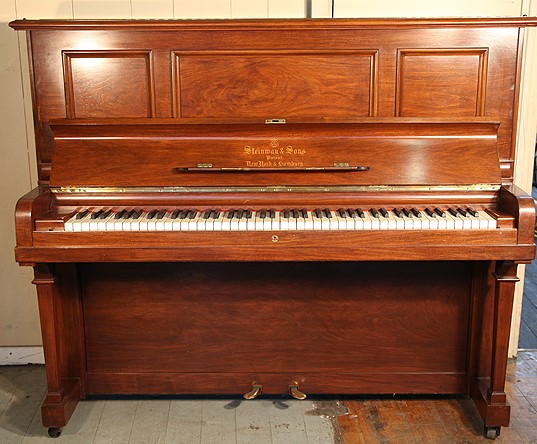 The second verse/chorus pair appears next, which is essentially the same as the first pair. John's second lead guitar phrase in the fourth measure of the verse lasts slighly longer, this delaying his echoing riff in the opposite channel until the fifth measure. Traces of Paul's Steinway Vertigrand piano are heard in measure eight of the verse and measure four of the chorus, as well as a full return of the triad E major chords in measure eight of the chorus. All the while, Paul plays a strict 4/4 drum pattern on closed hi-hat with no drum fills in sight. The second verse/chorus pair appears next, which is essentially the same as the first pair. John's second lead guitar phrase in the fourth measure of the verse lasts slighly longer, this delaying his echoing riff in the opposite channel until the fifth measure. Traces of Paul's Steinway Vertigrand piano are heard in measure eight of the verse and measure four of the chorus, as well as a full return of the triad E major chords in measure eight of the chorus. All the while, Paul plays a strict 4/4 drum pattern on closed hi-hat with no drum fills in sight.
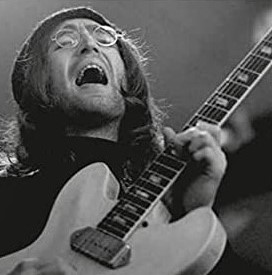 The third verse/chorus set is also essentially the same, John's second lead guitar riff being doubled in measure four of the verse, pushing the single echoing lead guitar riff to measure five once again. The eighth measure of this chorus features Paul haphazardly hitting nonsence stabs on the piano in a descending arrangement while he also puts in his first snare drum fill, this being a segue into the bridge that follows. The third verse/chorus set is also essentially the same, John's second lead guitar riff being doubled in measure four of the verse, pushing the single echoing lead guitar riff to measure five once again. The eighth measure of this chorus features Paul haphazardly hitting nonsence stabs on the piano in a descending arrangement while he also puts in his first snare drum fill, this being a segue into the bridge that follows.
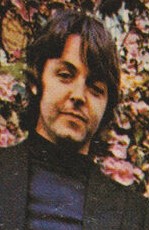 The bridge is also eight measures in length and in 4/4 time like the rest of the song, with the exception of measure eight which is in 6/4 time. The extra two beats contained in this eighth measure is to accommodate a 'Beatles break' that corresponds to John's lyrical instruction for us to “THINK,” which falls on the three-and-a-half beat of the measure. After a short break, Paul counts the song back in with three snare drum beats, ushering in the next verse/chorus set. Other noticeable features of this bridge are the piano chording throughout and Paul's harmony vocals in measures five through eight. The bridge is also eight measures in length and in 4/4 time like the rest of the song, with the exception of measure eight which is in 6/4 time. The extra two beats contained in this eighth measure is to accommodate a 'Beatles break' that corresponds to John's lyrical instruction for us to “THINK,” which falls on the three-and-a-half beat of the measure. After a short break, Paul counts the song back in with three snare drum beats, ushering in the next verse/chorus set. Other noticeable features of this bridge are the piano chording throughout and Paul's harmony vocals in measures five through eight.
 The fourth verse/chorus pair introduces Paul's maracas and John's acoustic guitar thumping overdub throughout. During the verse, Paul provides harmony only on words that end phrases, these being “bag,” “said,” “head” and “drag,” and during the chorus he harmonizes in measures four through eight. John alters his lead guitar riffs substantially this time around, even performing a harmonized ascending guitar phrase in the third measure of the chorus. Paul becomes more confident on the drums at this point, adding simple drum fills in measures four and eight, while the piano chording doesn't come in until the eighth measure of the chorus this time around. The fourth verse/chorus pair introduces Paul's maracas and John's acoustic guitar thumping overdub throughout. During the verse, Paul provides harmony only on words that end phrases, these being “bag,” “said,” “head” and “drag,” and during the chorus he harmonizes in measures four through eight. John alters his lead guitar riffs substantially this time around, even performing a harmonized ascending guitar phrase in the third measure of the chorus. Paul becomes more confident on the drums at this point, adding simple drum fills in measures four and eight, while the piano chording doesn't come in until the eighth measure of the chorus this time around.
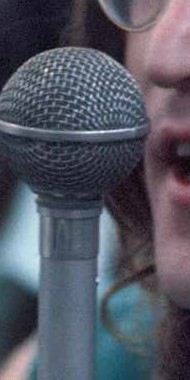 The fifth and final verse/chorus set is next, the final chorus being twelve measures long this time to accommodate a repeat of the final phrase “the way things are going / they're going to crucify me.” All instrumentation is in full force during this climactic finale, Paul's piano also being heard throughout. Paul sings harmony all the way through the verse and chorus, except for his timid ommision of the word “Christ,” which John emphasizes enthusiastically. John's lead guitar work becomes even more expressive, including multiple stabs in measures five and six of the verse as well as another harmonized ascending figure in measure three of the chorus. Paul also delivers simple drum fills in measures eight and twelve of the chorus, this final measure also including the beginning of John's harmonized “Honeymoon Song”-like guitar riff. The fifth and final verse/chorus set is next, the final chorus being twelve measures long this time to accommodate a repeat of the final phrase “the way things are going / they're going to crucify me.” All instrumentation is in full force during this climactic finale, Paul's piano also being heard throughout. Paul sings harmony all the way through the verse and chorus, except for his timid ommision of the word “Christ,” which John emphasizes enthusiastically. John's lead guitar work becomes even more expressive, including multiple stabs in measures five and six of the verse as well as another harmonized ascending figure in measure three of the chorus. Paul also delivers simple drum fills in measures eight and twelve of the chorus, this final measure also including the beginning of John's harmonized “Honeymoon Song”-like guitar riff.
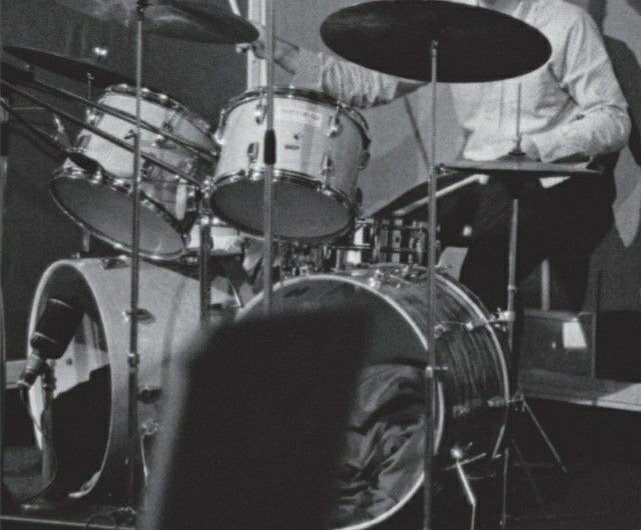 The four-measure conclusion to the song primarily features the triplet-like guitar run John started in the final measure of the last chorus, his vocalization of this riff from the rhythm track even being detected, while the rest of the instrumentation is playing at full bore. Everything comes to a halt on the downbeat of the fourth measure, all cymbals and guitars ringing until Paul's final drum and hi-hat beat has the last word. The four-measure conclusion to the song primarily features the triplet-like guitar run John started in the final measure of the last chorus, his vocalization of this riff from the rhythm track even being detected, while the rest of the instrumentation is playing at full bore. Everything comes to a halt on the downbeat of the fourth measure, all cymbals and guitars ringing until Paul's final drum and hi-hat beat has the last word.
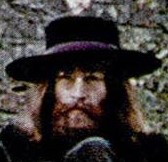 "The story came out about that only Paul and I were on the record, but I wouldn't have bothered publicising that," John explained in 1969. "It doesn't mean anything. It just sort of happened that there were only us two there. George was looking for a house somewhere, and Ringo, who was on the film set, said he couldn't come that night. Because of that, it was a choice of either mixing or doing a new one, and you always go for doing a new one instead of fiddling about with an old one. So that's what we did, and it worked out well." "The story came out about that only Paul and I were on the record, but I wouldn't have bothered publicising that," John explained in 1969. "It doesn't mean anything. It just sort of happened that there were only us two there. George was looking for a house somewhere, and Ringo, who was on the film set, said he couldn't come that night. Because of that, it was a choice of either mixing or doing a new one, and you always go for doing a new one instead of fiddling about with an old one. So that's what we did, and it worked out well."
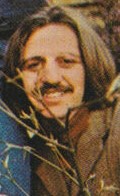 Were the other two band members upset about not being on the latest Beatles release? "That was OK," Ringo declared. "'Why Don't We Do It In The Road' was just Paul and me, and it went out as a Beatle track too. There's good drums on 'The Ballad Of John And Yoko.'" George reasoned: "I didn't mind not being on the record, because it was none of my business. If it had been 'The Ballad Of John, George And Yoko,' then I would have been on it." Were the other two band members upset about not being on the latest Beatles release? "That was OK," Ringo declared. "'Why Don't We Do It In The Road' was just Paul and me, and it went out as a Beatle track too. There's good drums on 'The Ballad Of John And Yoko.'" George reasoned: "I didn't mind not being on the record, because it was none of my business. If it had been 'The Ballad Of John, George And Yoko,' then I would have been on it."
American Releases
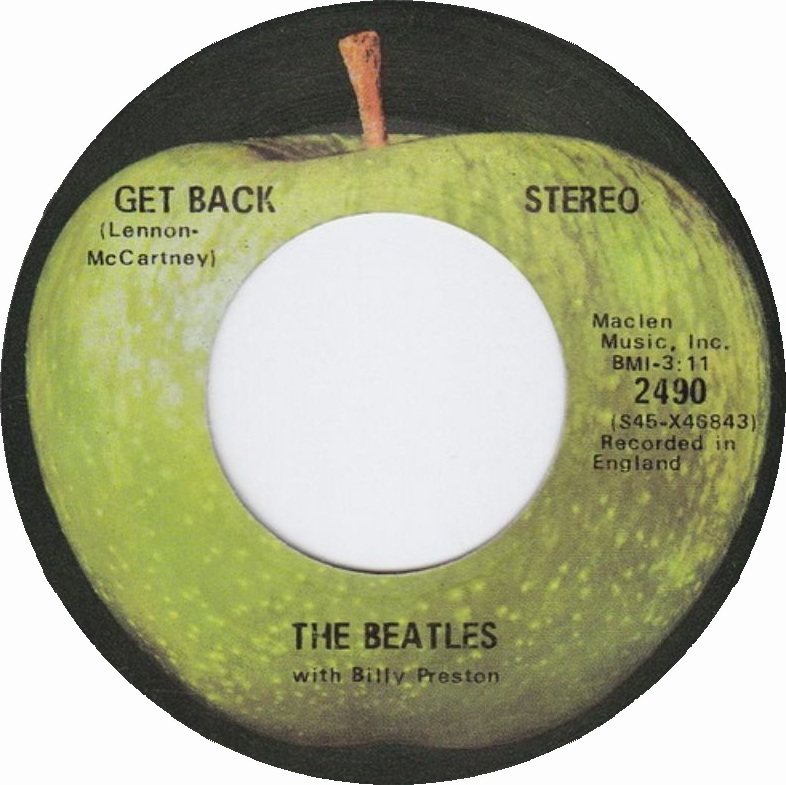 Being that the events described in “The Ballad Of John And Yoko” were the very recent exploits of the couple, Lennon wanted the single out as soon as possible. However, with the release of the long-awaited “Get Back” single being delayed until April 18th, 1969 in the UK (and May 5th in the US), John's desire to have this new single released approximately on May 2nd needed to be rethought. “We'll release it as soon as the other Apple singles go out of the charts, because it might kill the sales,” he stated at the time. “I suppose we're cowards that way. I don't regard it as a separate record scene...It's The Beatles' next single, simple as that.” Being that the events described in “The Ballad Of John And Yoko” were the very recent exploits of the couple, Lennon wanted the single out as soon as possible. However, with the release of the long-awaited “Get Back” single being delayed until April 18th, 1969 in the UK (and May 5th in the US), John's desire to have this new single released approximately on May 2nd needed to be rethought. “We'll release it as soon as the other Apple singles go out of the charts, because it might kill the sales,” he stated at the time. “I suppose we're cowards that way. I don't regard it as a separate record scene...It's The Beatles' next single, simple as that.”
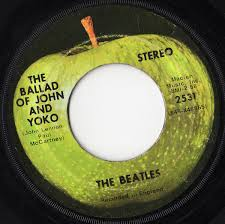 As it turned out, “The Ballad Of John And Yoko,” with George's “Old Brown Shoe” as the b-side, was released in the US on June 4th, 1969, just shy of one month after the “Get Back” single was released in the states. Interestingly, it was the first John Lennon a-side single in nearly two years, "All You Need Is Love" being released on July 17th, 1967. By July 12th, Billboard charted "The Ballad Of John And Yoko" at #8 on their Hot 100, the first of three weeks at that peak position, while “Get Back” was still in the #1 position. One might think that its being released while their previous single was still doing so well on the charts did indeed “kill the sales,” as John feared would happen. However, the problem here undoubtedly was because of several key American radio stations refusing to play the song due to its lyrical content. As it turned out, “The Ballad Of John And Yoko,” with George's “Old Brown Shoe” as the b-side, was released in the US on June 4th, 1969, just shy of one month after the “Get Back” single was released in the states. Interestingly, it was the first John Lennon a-side single in nearly two years, "All You Need Is Love" being released on July 17th, 1967. By July 12th, Billboard charted "The Ballad Of John And Yoko" at #8 on their Hot 100, the first of three weeks at that peak position, while “Get Back” was still in the #1 position. One might think that its being released while their previous single was still doing so well on the charts did indeed “kill the sales,” as John feared would happen. However, the problem here undoubtedly was because of several key American radio stations refusing to play the song due to its lyrical content.
 While many radio stations refused to air the song because it “mentions Christ in a manner considered blasphemous by some critics,” as Billboard magazine reported in its June 7th, 1969 issue, others decided to give it heavy airplay one way or the other. In 1980, John explained to what degree some American radio stations would go to get the song played: “What they did was, because they don't like the word 'Christ' – unless you're wearing a white robe, you can't say 'Christ' here – they turned it round so it would go: 'Rrrrp, you know it ain't easy...'” In any event, despite its only reaching as high as #8 on the Billboard Hot 100, the single still sold over one million copies, giving The Beatles yet another certified gold record. While many radio stations refused to air the song because it “mentions Christ in a manner considered blasphemous by some critics,” as Billboard magazine reported in its June 7th, 1969 issue, others decided to give it heavy airplay one way or the other. In 1980, John explained to what degree some American radio stations would go to get the song played: “What they did was, because they don't like the word 'Christ' – unless you're wearing a white robe, you can't say 'Christ' here – they turned it round so it would go: 'Rrrrp, you know it ain't easy...'” In any event, despite its only reaching as high as #8 on the Billboard Hot 100, the single still sold over one million copies, giving The Beatles yet another certified gold record.
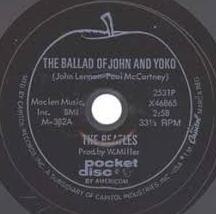 This single was the final Beatles record to also be released as a “Pocket Disc.” This short-lived format comprised four inch flexible discs that were manufactured by Americom Corporation in New York and were made available to consumers either from store counter displays or vending machines for 50 cents each. While it was claimed that the sound quality on these thin flexible discs was every bit as good as vinyl, the shallow grooves could not contain the same amount of audible information. Interestingly, the label listed "Prod. by W. Miller" instead of George Martin as on the "Hey Jude" pocket disc, this undoubtedly referring to Bill Miller, Capitol's foreign artists handler. Shortly after this single was released, the “Pocket Disc” format was discontinued for good. This single was the final Beatles record to also be released as a “Pocket Disc.” This short-lived format comprised four inch flexible discs that were manufactured by Americom Corporation in New York and were made available to consumers either from store counter displays or vending machines for 50 cents each. While it was claimed that the sound quality on these thin flexible discs was every bit as good as vinyl, the shallow grooves could not contain the same amount of audible information. Interestingly, the label listed "Prod. by W. Miller" instead of George Martin as on the "Hey Jude" pocket disc, this undoubtedly referring to Bill Miller, Capitol's foreign artists handler. Shortly after this single was released, the “Pocket Disc” format was discontinued for good.
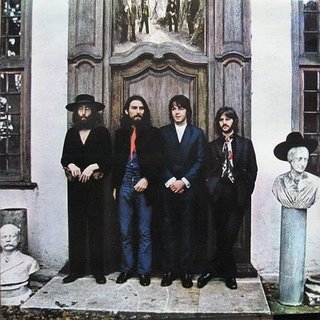 The first album to contain “The Ballad Of John And Yoko” was “Hey Jude” (originally titled “The Beatles Again”). This was released on February 26th, 1970 and was the fourth American Beatles album on Apple Records. It peaked at #2 on the Billboard album chart where it stayed for four weeks in a row, the album remaining in the top ten for eleven straight weeks. It was eventually released on compact disc on January 21st, 2014. The first album to contain “The Ballad Of John And Yoko” was “Hey Jude” (originally titled “The Beatles Again”). This was released on February 26th, 1970 and was the fourth American Beatles album on Apple Records. It peaked at #2 on the Billboard album chart where it stayed for four weeks in a row, the album remaining in the top ten for eleven straight weeks. It was eventually released on compact disc on January 21st, 2014.
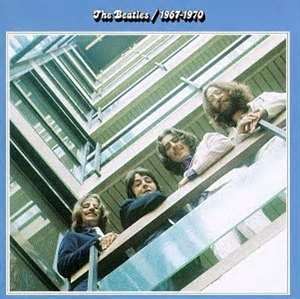 Next came the double-album compilation “The Beatles/1967-1970” (aka “The Blue Album”), which was released on April 19th, 1973. The first compact disc version of this collection came out on September 20th, 1993, and then in a remastered state on August 10th, 2010. Next came the double-album compilation “The Beatles/1967-1970” (aka “The Blue Album”), which was released on April 19th, 1973. The first compact disc version of this collection came out on September 20th, 1993, and then in a remastered state on August 10th, 2010.
On March 7th, 1988, the CD “Past Masters, Volume Two” was released, which contained all of the later Beatles tracks that were not contained on British albums, “The Ballad Of John And Yoko” being among them. Both volumes of "Past Masters" were combined into a double-album for its vinyl release on October 24th, 1988. The double-album concept was then adopted for the remastered re-releases of this title, the 2-CD set coming out on September 9th, 2009 and the vinyl double-album being released on November 12th, 2012.
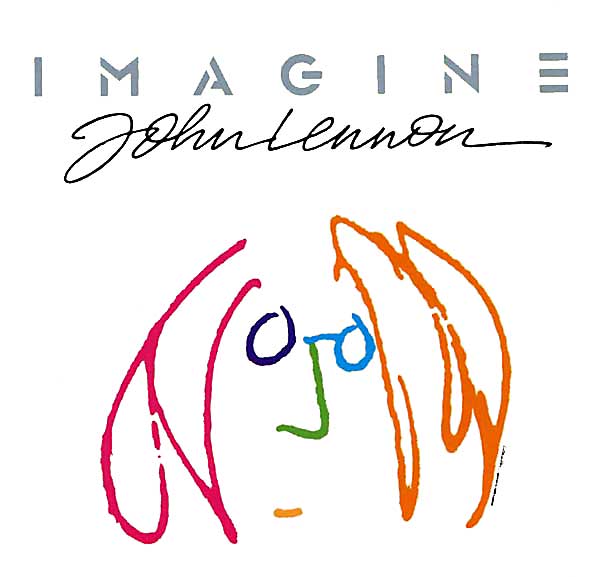 The next release of the song was actually not on a Beatles album, but on the soundtrack for the documentary film “Imagine: John Lennon.” The double album (or single CD), released on October 10th, 1988, featured highlights of his career with The Beatles as well as his solo career. The album peaked at #31 on the Billboard album chart. The next release of the song was actually not on a Beatles album, but on the soundtrack for the documentary film “Imagine: John Lennon.” The double album (or single CD), released on October 10th, 1988, featured highlights of his career with The Beatles as well as his solo career. The album peaked at #31 on the Billboard album chart.
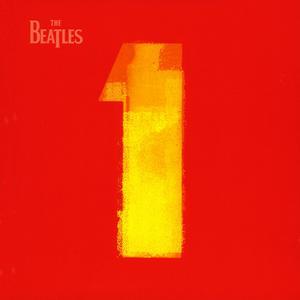 Then came the highly successful compilation album “Beatles 1,” which was released on November 13th, 2000. Since “The Ballad Of John And Yoko” reached the #1 position in the UK, it earned its place on this album containing only Beatles' songs that reached the summit in either the UK or US. A remastered version of this album was released in September of 2011, while a newly re-mixed version was released on November 6th, 2015. Then came the highly successful compilation album “Beatles 1,” which was released on November 13th, 2000. Since “The Ballad Of John And Yoko” reached the #1 position in the UK, it earned its place on this album containing only Beatles' songs that reached the summit in either the UK or US. A remastered version of this album was released in September of 2011, while a newly re-mixed version was released on November 6th, 2015.
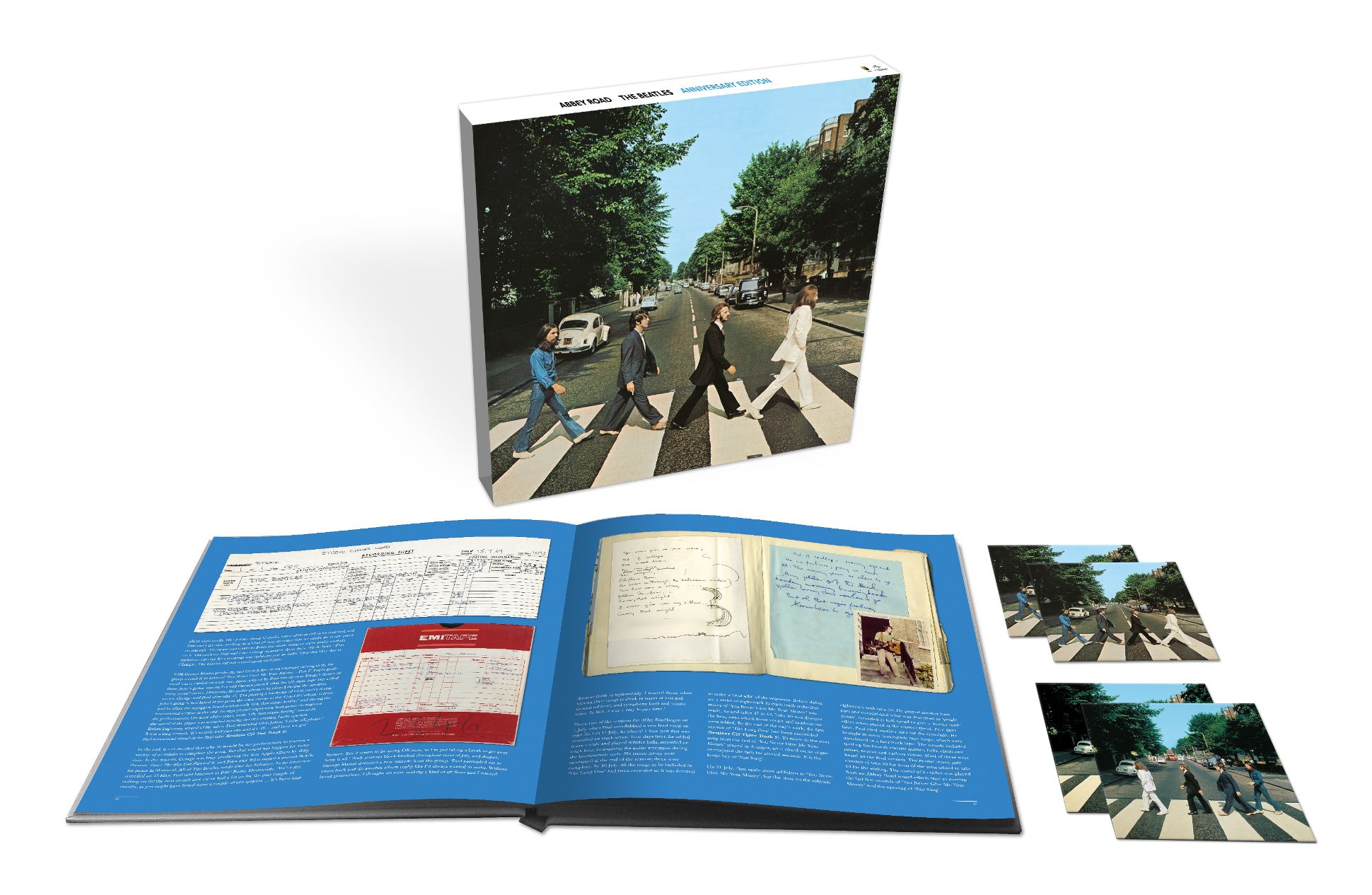 "Take seven" of the rhythm track of “The Ballad Of John And Yoko,” as recorded on April 14th, 1969, was included on the “Super Deluxe” 3CD + Blu-ray edition of “Abbey Road,” as well as the vinyl “Triple Album,” both of these being released on September 27th, 2019 in celebration of the album's 50th Anniversary. This song's inclusion here was warranted because of its being recorded within the time period that “Abbey Road” was conceived. "Take seven" of the rhythm track of “The Ballad Of John And Yoko,” as recorded on April 14th, 1969, was included on the “Super Deluxe” 3CD + Blu-ray edition of “Abbey Road,” as well as the vinyl “Triple Album,” both of these being released on September 27th, 2019 in celebration of the album's 50th Anniversary. This song's inclusion here was warranted because of its being recorded within the time period that “Abbey Road” was conceived.
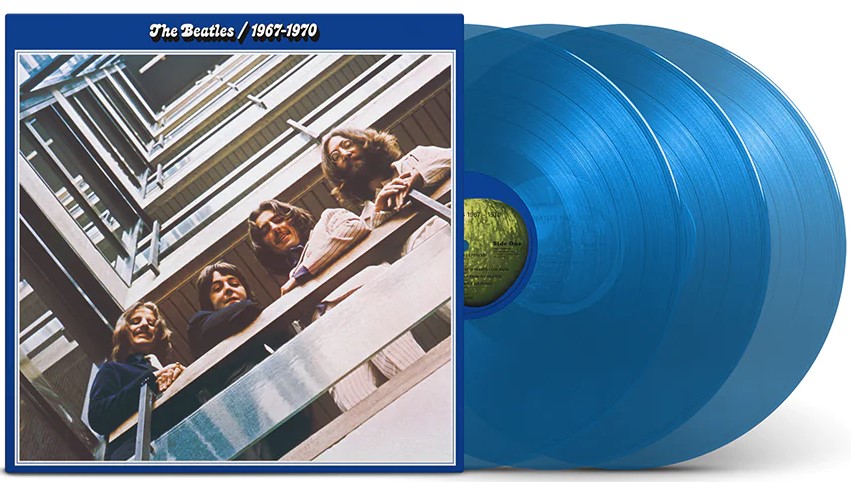 A 50th Anniversay edition of the compilation album "The Beatles / 1967 - 1970" (aka "The Blue Album") was released on November 10th, 2023, the Giles Martin stereo mix of "The Ballad Of John And Yoko" as detailed above, being included. This expanded release included 12 additional songs for a total of 38 tracks, and was made available as a double CD and as a triple vinyl release on both black and blue vinyl. A 50th Anniversay edition of the compilation album "The Beatles / 1967 - 1970" (aka "The Blue Album") was released on November 10th, 2023, the Giles Martin stereo mix of "The Ballad Of John And Yoko" as detailed above, being included. This expanded release included 12 additional songs for a total of 38 tracks, and was made available as a double CD and as a triple vinyl release on both black and blue vinyl.
Live Performances
The Beatles were well past the point of concert performances by the time “The Ballad Of John And Yoko” was released in June of 1969. Therefore, the song was never performed live by the group, nor was it ever included in any solo Beatles set lists thereafter.
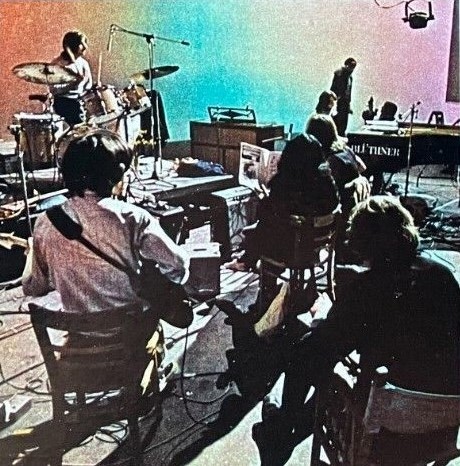 In order to promote the single, however, Apple Films created two 16mm color promos to be shown on television. Both films were essentially the same, one of which was chosen to be sent to the US for airing on the premier editon of the ABC-TV series "Music Scene" on September 22nd, 1969. The promo was pieced together, matching film footage of John and Yoko in Paris, Amersterdam, Vienna, and at their London Airport press conference whenever these events were mentioned in the song. Footage of Peter Brown on the phone with John is included when the lyrics call for it, while a sign with an exclamation point briefly appears on the screen whenever the word “Christ” is heard. In order to create the illusion that “The Ballad Of John And Yoko” was a full band effort, footage of The Beatles rehearsing at Twickenham Studios in early January, 1969, with a Krishna disciple visible at times sitting on the floor behind them, is interspersed throughout the film. Also of interest is footage of the couple travelling the British roads in their Rolls-Royce, John at one point clipping his fingernails. In order to promote the single, however, Apple Films created two 16mm color promos to be shown on television. Both films were essentially the same, one of which was chosen to be sent to the US for airing on the premier editon of the ABC-TV series "Music Scene" on September 22nd, 1969. The promo was pieced together, matching film footage of John and Yoko in Paris, Amersterdam, Vienna, and at their London Airport press conference whenever these events were mentioned in the song. Footage of Peter Brown on the phone with John is included when the lyrics call for it, while a sign with an exclamation point briefly appears on the screen whenever the word “Christ” is heard. In order to create the illusion that “The Ballad Of John And Yoko” was a full band effort, footage of The Beatles rehearsing at Twickenham Studios in early January, 1969, with a Krishna disciple visible at times sitting on the floor behind them, is interspersed throughout the film. Also of interest is footage of the couple travelling the British roads in their Rolls-Royce, John at one point clipping his fingernails.
Although this promo film didn't receive much exposure at the time, at least in the US, it was included in the “Beatles 1+” DVD/Blu-ray set that was released on November 6th, 2015.
Conclusion
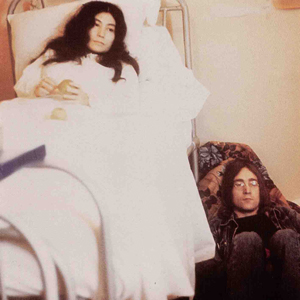 By 1969, John Lennon became more and more interested in documenting his life with music, something he continued in earnest with his solo career. In fact, there were times, the first being “The Ballad Of John And Yoko,” where he wanted them to be released immediately, if possible, to share his life with the world as the events were happening. His albums “Two Virgins,” “Life With The Lions” and “Wedding Album” were expressions of these intentions, as was his “Give Peace A Chance” single. By 1969, John Lennon became more and more interested in documenting his life with music, something he continued in earnest with his solo career. In fact, there were times, the first being “The Ballad Of John And Yoko,” where he wanted them to be released immediately, if possible, to share his life with the world as the events were happening. His albums “Two Virgins,” “Life With The Lions” and “Wedding Album” were expressions of these intentions, as was his “Give Peace A Chance” single.
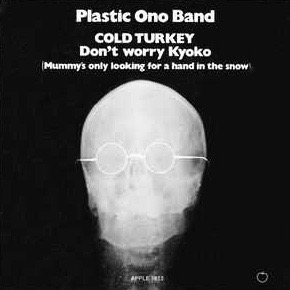 The event of breaking free from his Heroin addiction was the next subject to be tackled, the song “Cold Turkey” being written and readied for immediate release to the public. What many may not know is that, if the other Beatles would have agreed to it, this single would have continued the group's career past what most assume was the intended last Beatles album, “Abbey Road.” The event of breaking free from his Heroin addiction was the next subject to be tackled, the song “Cold Turkey” being written and readied for immediate release to the public. What many may not know is that, if the other Beatles would have agreed to it, this single would have continued the group's career past what most assume was the intended last Beatles album, “Abbey Road.”
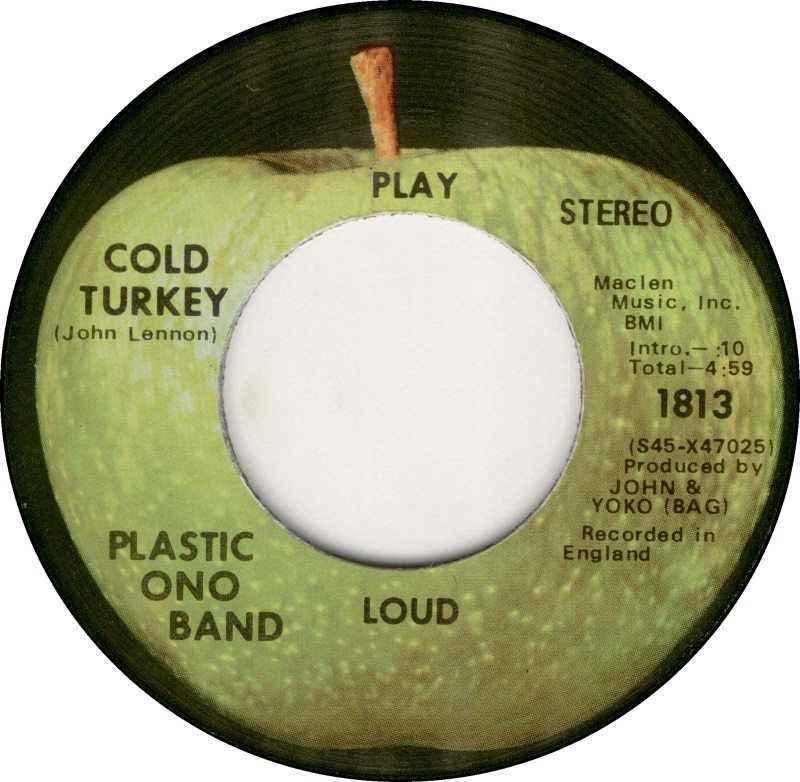 “I offered 'Cold Turkey' to The Beatles,” Lennon explained about the October 1969 released record, “but they weren't ready to record a single. When I wrote it, I went to the other three Beatles and said, 'Hey lads, I think I've written a single.' But they all said, 'Ummmm...Arrrr...Well,' because it was going to be my project. So I thought, 'Bugger you, I'll put it out myself.' So, I did it as 'The Plastic Ono Band.' I don't care what it goes out as, as long as it goes out. You have to realize that there's a peculiar situation in that if 'Cold Turkey' had the name 'Beatles' on it, it probably would have made the #1 position. 'Cold Turkey' has got Ringo and me on it and yet on half of the tracks on 'Abbey Road,' I'm not on them. I'm not even on half of the tracks on the ("White Album"). Even way back then, sometimes there might only be two Beatles on a track.” “I offered 'Cold Turkey' to The Beatles,” Lennon explained about the October 1969 released record, “but they weren't ready to record a single. When I wrote it, I went to the other three Beatles and said, 'Hey lads, I think I've written a single.' But they all said, 'Ummmm...Arrrr...Well,' because it was going to be my project. So I thought, 'Bugger you, I'll put it out myself.' So, I did it as 'The Plastic Ono Band.' I don't care what it goes out as, as long as it goes out. You have to realize that there's a peculiar situation in that if 'Cold Turkey' had the name 'Beatles' on it, it probably would have made the #1 position. 'Cold Turkey' has got Ringo and me on it and yet on half of the tracks on 'Abbey Road,' I'm not on them. I'm not even on half of the tracks on the ("White Album"). Even way back then, sometimes there might only be two Beatles on a track.”
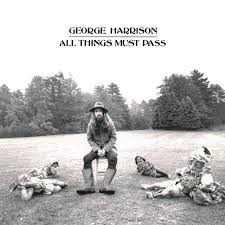 “It's got to the situation where if you have the name 'Beatles' on it, it sells. So you get to think,'What are we selling?' Do they buy it because it's worth it, or just because it says 'Beatles'? George is in the same position. I know that he's got songs that he's been trying to get on our albums since 1920! So, he's got to make an album of his own. And maybe if he puts 'Beatles' on the label rather than 'George Harrison,' it might sell more. That's the drag! Of course, we could each make an album and call it 'The Beatles,' but that would be cheating, and that's not my scene.” “It's got to the situation where if you have the name 'Beatles' on it, it sells. So you get to think,'What are we selling?' Do they buy it because it's worth it, or just because it says 'Beatles'? George is in the same position. I know that he's got songs that he's been trying to get on our albums since 1920! So, he's got to make an album of his own. And maybe if he puts 'Beatles' on the label rather than 'George Harrison,' it might sell more. That's the drag! Of course, we could each make an album and call it 'The Beatles,' but that would be cheating, and that's not my scene.”
 In the case of “The Ballad Of John And Yoko,” Paul was agreeable to cooperate with John and release a new Beatles single despite the uncertainty of the group's future at the time. However, even after Lennon's announcement to his band-mates on September 20th, 1969, that he was leaving the group, he apparently had a change of heart and asked the others to record “Cold Turkey” as the next Beatles single. Had they agreed, more new Beatles product could very well have been issued after “Abbey Road,” “Let It Be” and beyond. In the case of “The Ballad Of John And Yoko,” Paul was agreeable to cooperate with John and release a new Beatles single despite the uncertainty of the group's future at the time. However, even after Lennon's announcement to his band-mates on September 20th, 1969, that he was leaving the group, he apparently had a change of heart and asked the others to record “Cold Turkey” as the next Beatles single. Had they agreed, more new Beatles product could very well have been issued after “Abbey Road,” “Let It Be” and beyond.
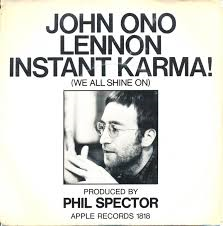 However, as history shows, John continued to document his life with Yoko to the world without The Beatles, such as with "Instant Karma," which was recorded the same day as it was written and released only ten days later. Then, on April 9th, 1970, while John was at Arthur Janov's private clinic in London undergoing “Primal Scream Therapy,” McCartney phoned Lennon to inform him that he was leaving the group. Finally the uncertainty of The Beatles' future was decided for good. However, as history shows, John continued to document his life with Yoko to the world without The Beatles, such as with "Instant Karma," which was recorded the same day as it was written and released only ten days later. Then, on April 9th, 1970, while John was at Arthur Janov's private clinic in London undergoing “Primal Scream Therapy,” McCartney phoned Lennon to inform him that he was leaving the group. Finally the uncertainty of The Beatles' future was decided for good.
Song Summary
“The Ballad Of John And Yoko”
Written by: John Lennon / Paul McCartney
- Song Written: March through April 14, 1969
- Song Recorded: April 14, 1969
- First US Release Date: June 4, 1969
- US Single Release: Apple #2531
- Highest Chart Position: #8
- First US Album Release: Apple #SW-385 “Hey Jude”
- British Album Release: Apple #SKBO-3404 “1967-1970”
- Length: 2:58
- Key: E major
- Producer: George Martin
- Engineers: Geoff Emerick, John Kurlander
Instrumentation (most likely):
- John Lennon - Lead Vocals, Rhythm Guitar and thumping (1964 Gibson J-160E), Lead Guitar (1965 Epiphone ES-230TD Casino)
- Paul McCartney - Drums (1968 Ludwig Hollywood Maple), Bass (1964 Rickenbacker 4001 S), Piano (1905 Steinway Vertegrand), maracas, backing vocals
Written and compiled by Dave Rybaczewski
|
IF YOU WOULD LIKE TO MAKE A DONATION TO KEEP THIS WEBSITE UP AND RUNNING, PLEASE CLICK BELOW!
Sign Up Below for our MONTHLY BEATLES TRIVIA QUIZ!
|